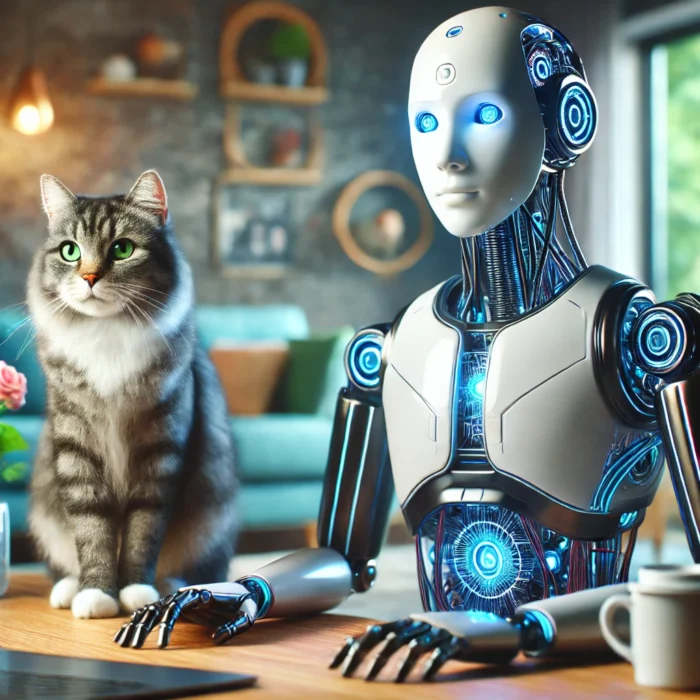
1. Natural Learning vs. Data-Driven Learning
Pet Cats: Cats primarily learn through curiosity, observation, and experience. They interact with their environment, experiment, and adapt based on what they observe. A cat might chase a moving object, learn that it’s safe to rest in a particular spot, or know when its owner needs comfort—all driven by instinct and emotional cues.
AI: AI, on the other hand, learns by analyzing large datasets and recognizing patterns through algorithms. It improves its responses over time through training but operates strictly based on logic and data input. Unlike cats, AI doesn’t have emotions or personal experiences; it merely processes information based on programmed rules and data patterns.
2. Emotional Intelligence vs. Logical Intelligence
Pet Cats: Cats display emotional intelligence. They can sense changes in their owners’ moods, offer affection when needed, and sometimes show empathy when their human companions are feeling down. A cat’s behavior is driven not only by survival instincts but also by emotional responses—such as seeking attention or withdrawing when they’re not feeling well.
AI: AI lacks emotional intelligence. While it can analyze data and even simulate human emotions to some extent (like chatbots or AI assistants), it cannot truly feel emotions or react empathetically. It operates based on logic, calculations, and pre-programmed responses, making it an effective tool for tasks but devoid of emotional depth.
3. Instincts and Unpredictability vs. Predictability and Structure
Pet Cats: Cats are unpredictable, guided by their instincts. They can act in unexpected ways, whether it’s chasing a toy, choosing a resting spot, or suddenly seeking affection. This unpredictability is what makes cats unique—they’re driven by emotion, curiosity, and survival instincts, all of which make their behavior sometimes surprising and complex.
AI: AI operates within a structured framework. It follows patterns based on data and algorithms, which means it can predict outcomes and responses with high accuracy. However, AI’s actions are predictable because they are based on predefined logic. It doesn’t have the free will or emotional drivers that make a cat’s behavior so intriguing.
4. Problem-Solving Capabilities: AI vs. Cats
Pet Cats: Cats are capable of problem-solving, though in a different way than AI. For instance, they might figure out how to open a door, find food, or navigate their environment. Their problem-solving is often based on trial and error—testing, learning, and adapting as they go. While not as precise as AI, a cat’s approach can be creative and resourceful.
AI: AI excels at logical problem-solving in structured environments. Whether it’s diagnosing a medical issue, predicting consumer behavior, or optimizing logistics, AI can process large amounts of information and quickly find solutions based on patterns in data. AI is highly effective in automating tasks and solving specific problems, but it lacks the creativity and adaptive thinking of a cat.
5. Companionship and Emotional Connection vs. Functionality and Automation
Pet Cats: One of the most notable qualities of a pet cat is its ability to form a deep emotional connection with its owner. Cats offer companionship, warmth, and comfort, especially in times of loneliness or stress. Their presence can bring peace and emotional support, offering a connection that goes beyond simple interaction.
AI: While AI is incredible at automation and can assist in many tasks, it doesn’t provide companionship. AI can simulate conversation and give responses based on data, but it cannot replace the genuine emotional connection that comes from interacting with a living, breathing being. AI might offer convenience and efficiency, but it lacks the warmth and affection that a pet cat provides.
Conclusion:
In conclusion, while AI brings significant advancements in technology, offering precision, problem-solving abilities, and automation, it cannot replace the natural intelligence, emotional connection, and unpredictability that cats provide. Cats, driven by their instincts, emotions, and curiosity, offer something AI can never replicate—a sense of companionship and charm that is deeply rooted in their nature.
